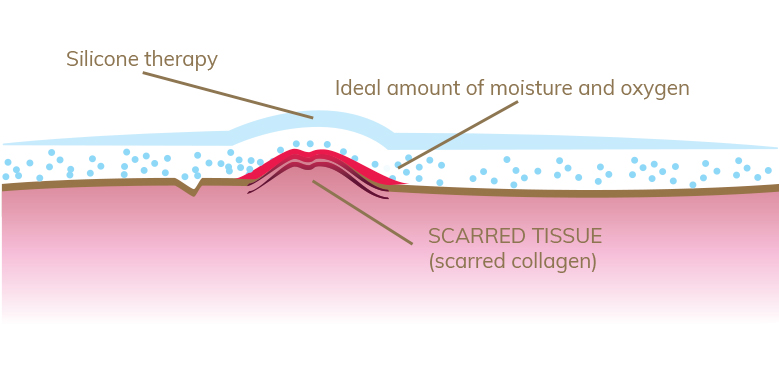Scarring is our skin's natural reaction to damage, whether it is due to injury or surgery. Scar healing can be affected by several factors, such as the condition of the skin, depth of the tissue damage, and scar treatment. Do you want to make your scars less visible? The solution is the so-called healing method using silicone gels or patches.
Take extra care of your scars
Scarred tissue requires long-term care. The sooner you start, the better the results. Softening, hydration, and pressure therapy are all beneficial for scar healing. Silicone is proven to help soften and hydrate scars. Applying a thin layer to the scar can reduce redness and itching immediately. You should begin to see significant improvement after two weeks of treatment.
Treat your keloid and hypertrophic scars with silicone
Scars need enough moisture and oxygen to heal. Silicone encapsulates the scar and provides balanced hydration and oxygen. Although the wound is completely covered, silicone allows it to breathe while releasing excess moisture. Hydrated and oxygenated skin allows the surrounding healthy tissue to blend better with the scar tissue and helps soften and flatten the scar and reduce any discolouration.

How to maximise the effect of silicone
Whether you decide to use scar gel or sheets, it is essential to use silicone products correctly. How to achieve the best possible results?
- Use the products on a long-term basis (8-16 weeks)
- Wash the wound and sheets regularly
- Use the products on healed, dried scars with no scabbing
* Silicone is non-toxic, safe, and easy to apply to normal, sensitive, and children's skin.
How to apply scar treatment products correctly?
The application of both silicone scar gel and silicone scar sheets is easy. However, there are a few steps to follow to maximise the effect of silicone and ensure the products work effectively.
- always allow LIPOELASTIC gel to dry after application
- always apply LIPOELASTIC sheets to dry skin to ensure better adhesion and promote better scar healing
For more information about scar treatment after surgery, visit the LIPOELASTIC Scar Treatment Section.

 LIPOELASTIC TEAM
LIPOELASTIC TEAM 




